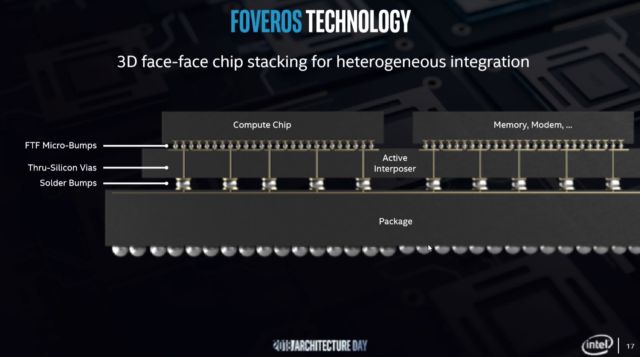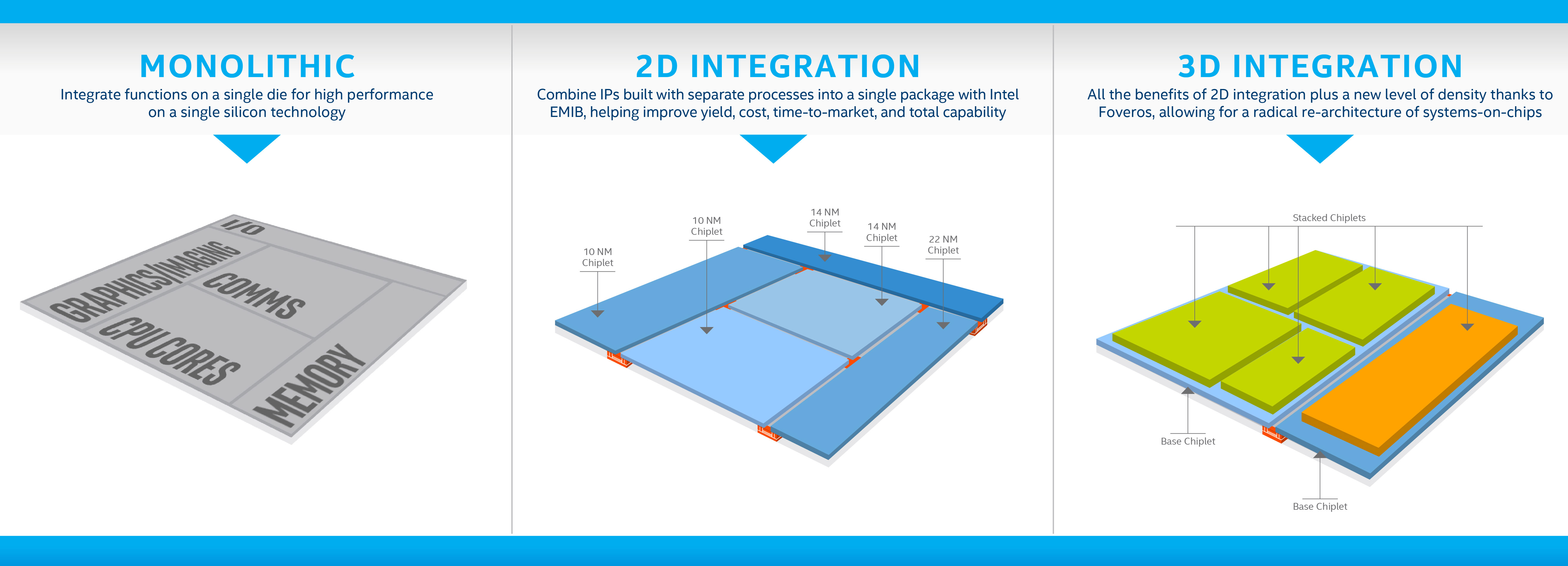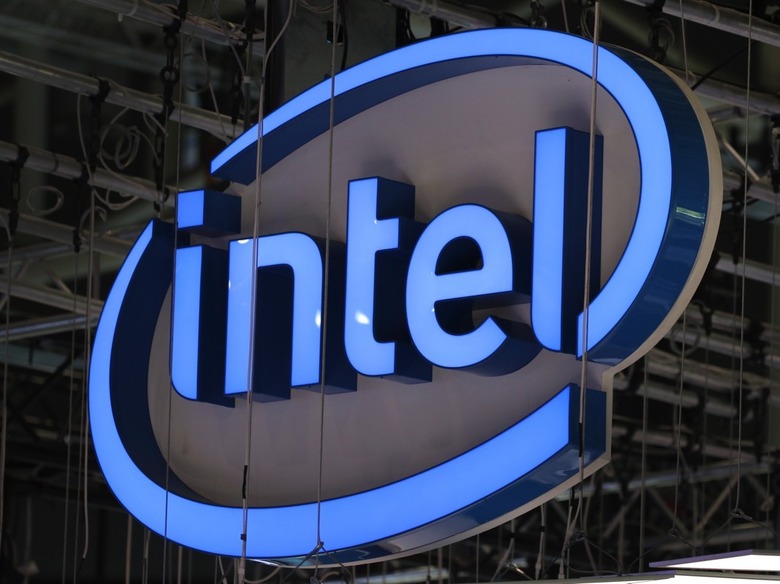Intel Just Unveiled New Foveros 3D Chip Stacking Tech And 10nm Sunny Cove CPU
Intel Foveros isn't the name of a new chip, but rather a technology that will allow the chipmaker to bundle various vertical chip components, and thus improve the speed of devices without having to wait for a new chip manufacturing process to mature, like the 10nm chips that it keeps postponing.
In other words, with Foveros, Intel will be able to stack all sorts of chips on top of each other, including CPU, memory, and others, without worrying about their respective underlying manufacturing technology.
If this "package-on-package" (PoP) tech sounds familiar, that's because we already have PoP chip designs in current smartphones. Intel, however, isn't just adapting PoP from mobile to PC. On phones and tablets, PoP designs combine memory with processors, linking the two with hundreds of connections. Foveros 3D chips, meanwhile, will use etched silicon to improve the number of interconnections and, therefore, the speed, Ars Technica explains.

The Foveros tech has been in development for almost two decades. "We've been working on this packaging technology for nearly 20 years," Intel's chief of chip architecture Raja Koduri told Reuters. "There's some real physics problems to solve in stacking logic on logic."
Instead of making full 10nm chips that contain the CPU and other components, Foveros 3D stacking will let Intel mix and match various chip components. Intel could use 10nm high-performance CPU cores together with USB, Wi-Fi, Ethernet, and PCIe components that can be built on low-power 14nm or 22nm processes, Ars says.
Intel would stack these various "chiplets" on top of one another in future designs. Low-power components like I/O and power delivery would sit on the base die, while the high-performance logic would be stacked on top.
The first such chips will arrive in the second half of 2019. The first products will pack 10nm compute logic, an Intel 22FFL (FinFET Low power) process base die, and PoP memory. The 10nm chiplet will include a brand new Sunny Cove high power core, as well as four Atom cores that will handle light workloads. If this architecture sounds familiar, that's because it's what you see in ARM processors on mobile devices. The resulting processor would measure 12 x 12 x 1mm and require 2mW of standby power, targeting ultra-mobile devices.

It's unclear what devices will make use of the new Intel chips and architecture. Per The Verge, everything "from mobile devices to the data center" will feature Foveros processors over time.
Intel also unveiled a new Gen11 integrated graphics card that's "designed to break the 1TFLOPS barrier," The Verge adds. The new GPU will be part of the new 2019 10nm-based processors.
Ars also notes that AMD is taking a similar approach with its new Zen 2 processors. The CPU logic is built on the 7nm process, with the PCIe, DDR, USB, and SATA being placed on a 14nm I/O die.
Qualcomm, meanwhile, recently announced a new ARM platform specifically designed for Windows 10 devices: The new 7nm Snapdragon 8cx that will compete directly with some of Intel's existing chips, including Foveros 3D.
